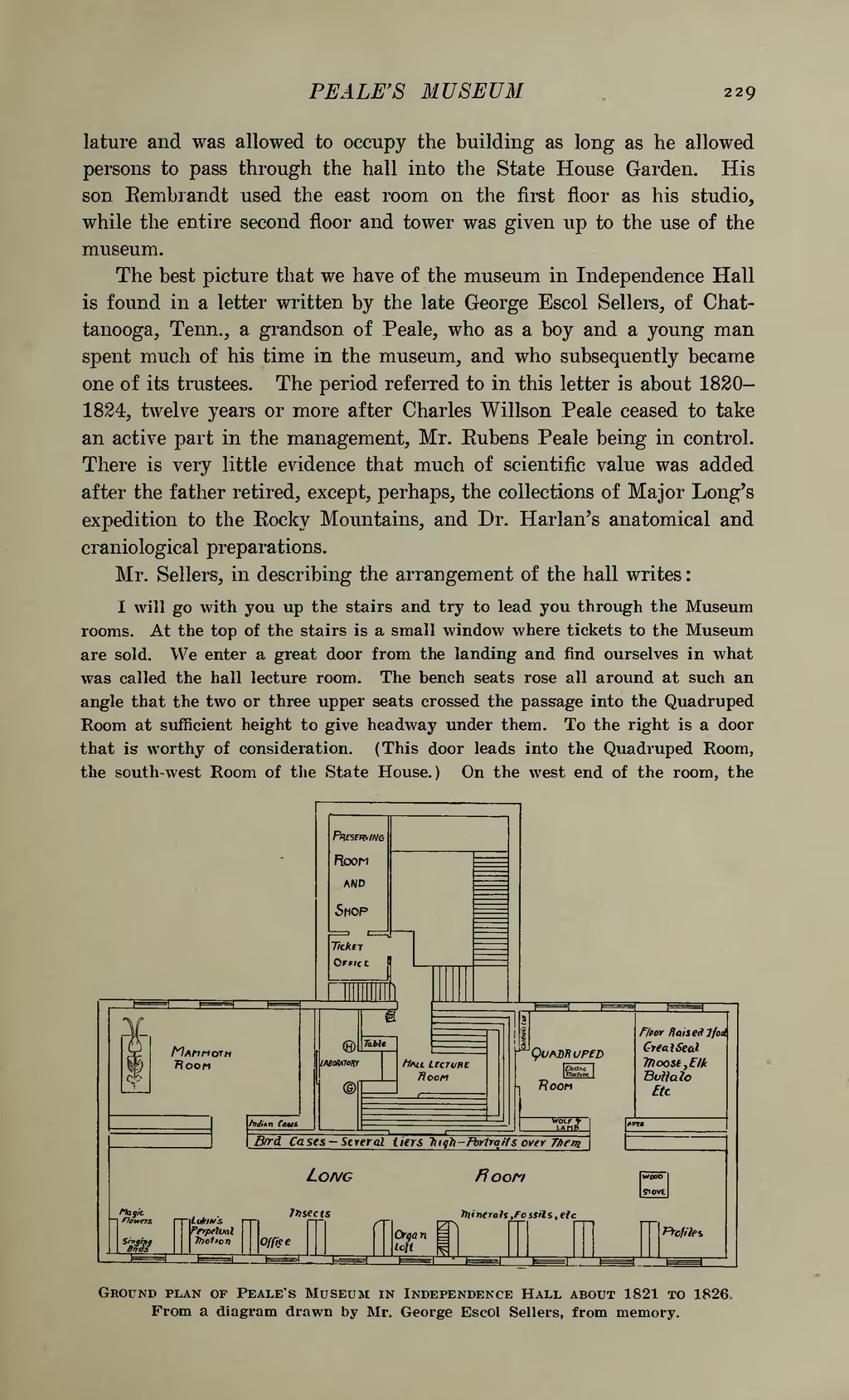lature and was allowed to occupy the building as long as he allowed persons to pass through the hall into the State House Garden. His son Rembrandt used the east room on the first floor as his studio, while the entire second floor and tower was given up to the use of the museum.
The best picture that we have of the museum in Independence Hall is found in a letter written by the late George Escol Sellers, of Chattanooga, Tenn., a grandson of Peale, who as a boy and a young man spent much of his time in the museum, and who subsequently became one of its trustees. The period referred to in this letter is about 18201824, twelve years or more after Charles Willson Peale ceased to take an active part in the management, Mr. Rubens Peale being in control. There is very little evidence that much of scientific value was added after the father retired, except, perhaps, the collections of Major Long's expedition to the Rocky Mountains, and Dr. Harlan's anatomical and craniological preparations.
Mr. Sellers, in describing the arrangement of the hall writes:

